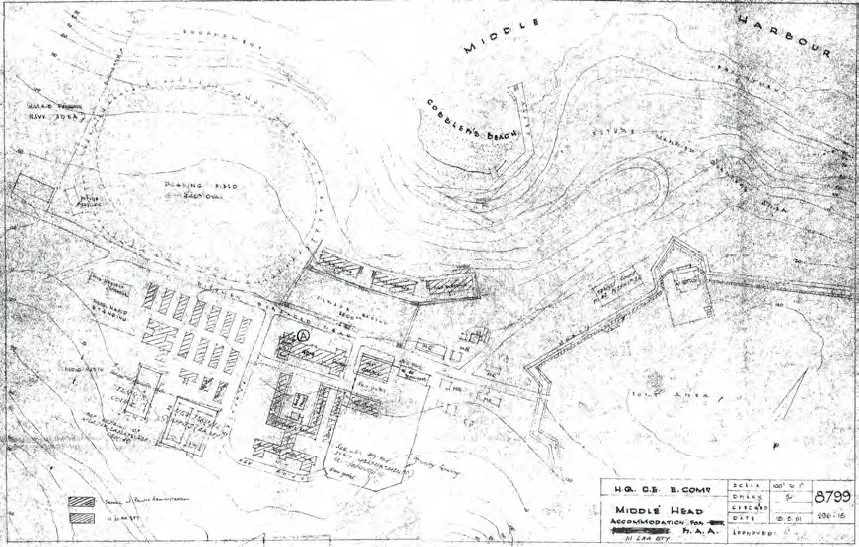The Social Heritage of the Timber Barracks at Middle Head
Middle Head in Sydney presents a succession of winding plateaus and spurs culminating in a jutting headland that points to the open sea between Sydney Heads.
The stratified sandstone slopes are steep, cracked, warped and uplifted over millions of years, and they’re covered in bushland. There is also a profusion of military heritage buildings scattered around the place leaving no doubt that this has long been a military precinct.
The oldest fortification of gun batteries dates back to the 1870s. There’s the submarine miners depot at Chowder Bay (1891), World War I military hospital, and the World War II barracks in 1949 converted to the Australian School of Pacific Administration.
Then there are the brick buildings of 10 Terminal, designed and built to house important wartime communications work. They were built in 1942 with hard to come by materials, and camouflaged to hide them from snooping eyes at sea. These buildings were later used by the Army School of Intelligence and then, significantly, by Australia’s first Vietnam War contingent, the Australian Army Training Team Vietnam (AATTV).
The AATTV, Australia’s most decorated unit with more than 100 commendations including four Victoria Crosses, trained and was headquartered in those old brick 10 Terminal buildings. Officers' barracks and mess occupied part of the buildings. In the 1950s three timber barrack buildings were added on the north side, flanking the parade ground and completing the military precinct on the plateau, to accommodate Other Ranks.
Servicemen and women worked and lived in this military village, built at a time in Australia’s history when our very survival was most threatened, and here they formed corporate and social bonds that are so important in a successful defence effort. Future generations of Australians deserve the opportunity to hear about their lives, their accomplishments and their connections with Middle Head.




